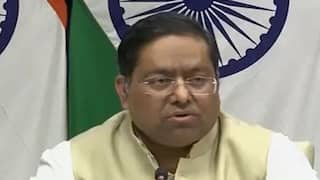Indian Yoga Is booming In US And Canada. But Is Yoga Practice Disconnected From Its Spiritual Roots?

”Freedom is unavailable to those who remain imprisoned by themselves,” writes Balrāj, yogin, Vedic astrologer, and Oxford University graduate born and raised in Toronto, Canada. Balrāj’s approach to Yoga is “phenomenological” or ”existential”. This approach is especially useful to those who feel that traditional metaphysical ways of describing Indian spiritual practices are too abstract and inaccessible.
In this approach, you begin by looking directly at your own experience: “I don’t want to suffer anymore, but what exactly does this mean? What exactly is the problem of suffering? What exactly am I trying to accomplish in my spiritual practice?”
Questions into the nature of our own existence are universal and have been at the centre of Indian spiritual traditions for thousands of years. Why do I suffer? Who/what am I? It is therefore not surprising that this ancient wisdom has found its way to the US (and the West in general), where the influence of Indian gurus has been especially pronounced since the 1960s. Each guru in their own way taught spiritual wisdom that could help liberate one from their suffering. Among these Indian traditions, Yoga has thrived. And among the practices of Yoga, Yogāsana has become the king. And this growth in physical Yoga has created a booming market for Yoga studios, classes, teacher certifications, and accessories.
The Business Of Yoga
In 2020, the global market for Yoga courses and accreditation was projected to reach upwards of $66.2 billion by 2027, up from $37.5 billion in 2019, according to an Allied Market Research report. In 2019, the market for Pilates and Yoga Studios was projected to reach $215 billion by 2025, up from $87.9 billion in 2018, growing at a rate of nearly 12% per year.
North America continues to command the highest market share in terms of revenue, an Expert Market Research article says. According to data available in the public domain, the number of Americans who participated in Yoga grew to nearly 29 million in 2018, up from under 18 million in 2008. The US currently has approximately 6,000 operating Yoga studios, and it is estimated that a yogi/yogini in the US will spend $62,640 on Yoga during their lifetime.
Yoga continues to receive growing support from authorities in the US. In 2021, the Alabama State Government voted overwhelmingly in favour of lifting a 28-year ban prohibiting Yoga from being taught in public elementary schools. North of the US border, 21% of Canadians practise Yoga, and Canada has at least 2,000 professional Yoga teachers among its total population of just 38 million.
Research has shown that a large number of people turn to Yoga for its physical benefits: improved flexibility, increased strength, and similar goals.
“Postural practices [āsana]… have become almost synonymous with yoga in the world today,” write Yoga scholars James Mallinson and Mark Singleton in the introduction to their 2017 book, Roots of Yoga. However, “very early definitions of yoga” emphasised “mastery of the mind resulting from its separation from sense objects”. For yogis, “mastery of the mind” was the way to achieve freedom from suffering (and rebirth).
How are the health benefits of yogāsana related to the “mastery” of inner life? And what exactly does “mastery of the mind” mean?
“Your (individual, independent) self craves a sense of wholeness/completeness that would permanently eliminate its inner sense of lack, so it can (finally) be ‘at peace’, never compelled to strive for anything ever again,” Balrāj writes in his article, The Yoga of Yoga. To achieve a state of permanent peace, we try to obtain worldly things that we think will make us feel permanently secure, important, and complete, such as financial freedom, romantic love, perfect mental health, a perfect body, unlimited fame, and social status, and even enlightenment. But because the ego “can never achieve the substantiality it desires”, this “craving to be more substantial only reinforces its lack”, further motivating “particular ways—self-interested ways—of being in the world, ways that keep us ‘stuck’ in identities/situations/habits that produce and re-produce suffering.”
Mind mastery is therefore less about controlling our inner life and more about the way we relate to our habitual ways of thinking, feeling, and our desire to become more complete and substantial. As we become more aware of these implicit, habitual, automatic ways of thinking, feeling, perceiving, and acting, we become less “imprisoned” by them. “Mastery of the mind” is more about directly seeing the various ways our inner lives are “always already” wrapped up in our worldly existence. This is how you come to realize your “true” self. Balrāj’s has written more on this in his article ‘Prakṛti and Puruṣa’.
These are the very “existential” principles underlying Balrāj’s unique approach to Vedic astrology as well, which he calls “psycho-spiritual” Vedic astrology. He focuses on self-awareness rather than making predictions and solving the ego’s material problems. He emphasises becoming starkly aware of our own destructive habits rather than relying solely on a metaphysical solution to instantly change our life circumstances. The more we avoid our inner life, the more narrow and rigid our lives become as we avoid everything and everyone that causes the pain we can’t tolerate, and we end up feeling stuck, disconnected, and unhappy. He uses conscious and unconscious approaches to encourage self-awareness. These approaches include traditional methods such as breath-control and meditation, but also contemporary methods, including “conversational” hypnosis. Conversational hypnosis doesn’t require trance and is designed to bring unconscious roots of destructive habits to conscious awareness so they no longer keep us imprisoned.

Balrāj is a Canadian yogi, professional astrologer, and certified hypnotist. (Facebook, Instagram.)
In an article on astrological remedies, he suggests that traditional Vedic remedies (e.g., ratna, yantra, pūjā, etc.) be used as support for conscious efforts at self-understanding.
So what does physical Yoga have to do with self-awareness? Nothing in particular. “What you do is far less important than how you do it”, Balrāj writes in a recent tweet. Awareness of your implicit habits can (and should) be cultivated anywhere and anytime, regardless of what type of Yoga you practise; it shouldn’t be restricted to your time on a Yoga mat. For those with a regular āsana practice, holding your bodies in generally uncomfortable positions can, indeed, be a useful tool for learning to be with discomfort and stress rather than trying to avoid it or ‘transcend’ it. If, however, your Yoga practice is part of a personal project to produce a more substantial ego (instead of noticing the habits of the ego that craves permanent peace or recognition), it could be doing more harm than good.
As tragic as the COVID-19 pandemic has been, perhaps its negative effects on mental health will lead Yoga teachers worldwide to return to practices directed at fostering self-awareness. Perhaps this is the key to re-attaching contemporary, globalised forms of Yoga to its spiritual roots.
Kaushal Lakhotia is Associate Executive Producer with ABP Network.
[Disclaimer: The opinions, beliefs, and views expressed by the various authors and forum participants on this website are personal and do not reflect the opinions, beliefs, and views of ABP News Network Pvt Ltd.]


























